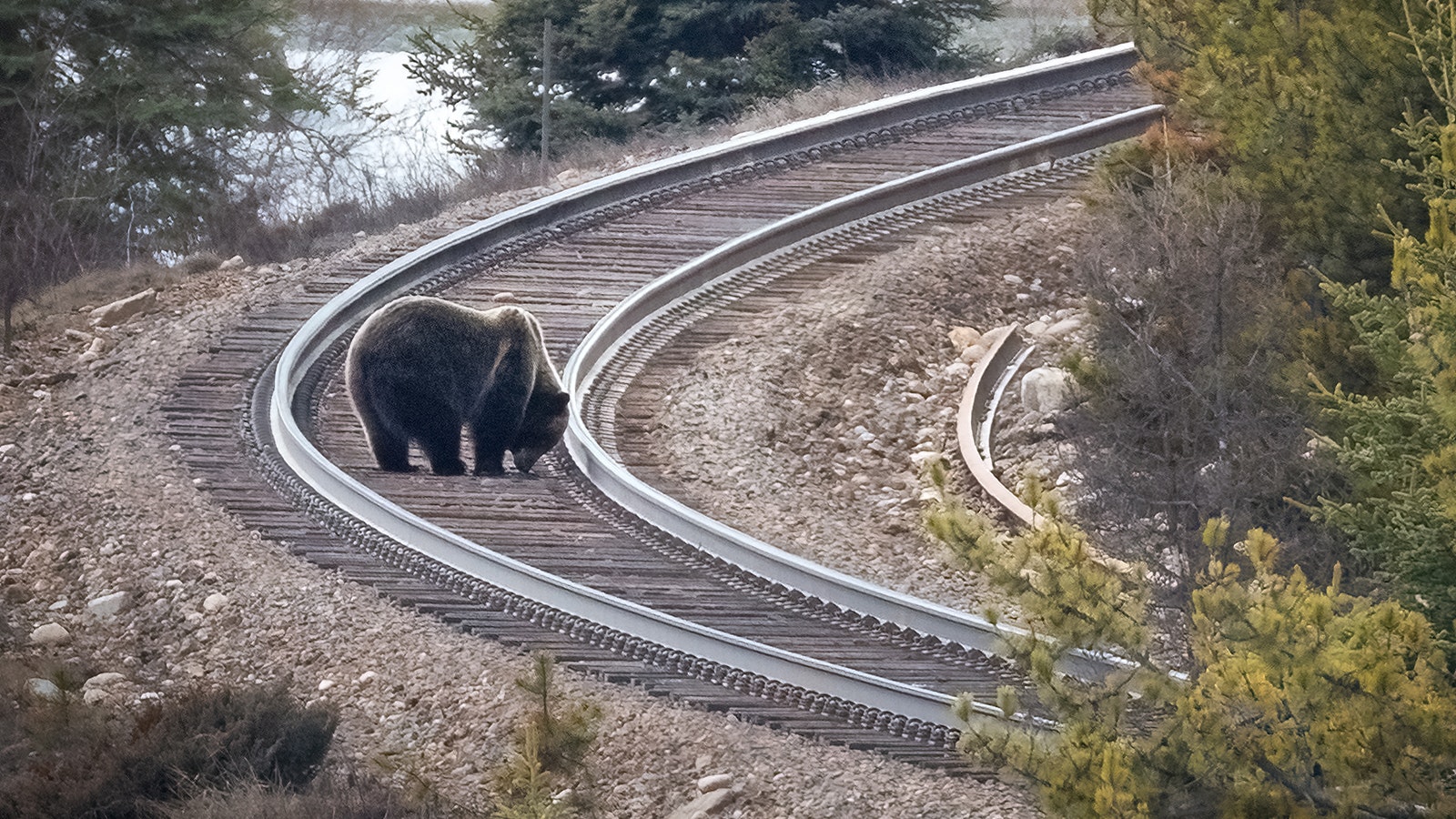Getting “drunk” on fermented grain has killed dozens of grizzly bears along a treacherous stretch of rail line near Glacier National Park, Montana.
Since 1980, 63 bears have been killed along a stretch of rail line that goes over Marias Pass and the Great Bear Wilderness, according to reports from state and federal wildlife agencies. The worst year on record was 2019, when eight grizzlies were killed by trains, and three have been killed so far this year.
Many of them likely died during a “drunken attempt” to outrun the trains, a Wyoming bear expert said.
Grain spilled from railcars along the tracks can be a tempting treat for bears, retired federal ecologist Chuck Neal of Cody told Cowboy State Daily.
With enough moisture from snow and rain, “the spilled grain actually ferments in place and becomes a de facto brewery,” he said.
Two Bear Populations
There are two major populations of grizzlies in the Lower 48, each of them estimated at more than 1,000 bears. Wyomingites are most familiar with Greater Yellowstone Ecosystem grizzles, which occupy expansive territory in Wyoming, Montana and Idaho.
The grizzlies getting killed by trains near Glacier Park belong to the Northern Continental Divide grizzly population. It’s centered in the rugged mountains for northwest Montana, but some of those bears also have been pushing out into Montana’s prairies.
So far, the two populations have remained distinct. However, they are about only 60 miles apart in some places and could be close to comingling, which conservationists say could be pivotal to the long-term vitality of the species in the Lower 48.
Yellowstone Bears Hit By Vehicles, Not Trains
Trains can be a threat to grizzlies in some areas, such as near Glacier Park or in parts of Canada, biologist Frank van Manen told Cowboy State Daily. He heads the U.S. Geological Survey’s Interagency Grizzly Bear Study Team in the GYE.
Luckily for GYE grizzlies, getting hit by trains hasn’t been a problem yet, he said.
“We are fortunate to not have that issue as a mortality source in the GYE,” he said. “Mortalities from train collisions are also a major issue in several Canadian parks, sometimes representing the main source of mortality.”
Vehicles have taken a toll on grizzlies the GYE.
So far this year, six grizzlies have been killed by vehicles, including one each on the North Fork and South Fork highways near Cody, and one in the Grayling Creek area of Yellowstone National Park, according to USGS reports.
One of Wyoming’s most famous bears, Grizzly 610, was struck by a vehicle on U.S. Highway 89 on Oct. 9 and languished by the roadside for several hours. Much to the relief of her worldwide fanbase, she appeared to recover fully and reunited with her three yearling cubs.

Asleep On The Tracks
As for the Glacier Park bears, not enough is being done to protect them from getting hit by trains, Neal said.
And being intoxicated on fermented grains just makes things all the worse for the grizzlies.
Bears that are attracted to the fermented grain “might fall asleep right on site if they get drunk first. They can, and have, fallen asleep in a drunken stupor right on the tracks,” Neal said.
“Other times they loiter on the tracks until a train approaches, at high speed, then drunkenly attempt to outrun the train — no can do — and are smashed,” he added.
‘Bears Will Continue To Die’
Neal said he thinks the Burlington Northern Santa Fe (BNSF) rail company isn’t doing enough to protect the bears from such a terrible fate.
“BNSF have been stalling doing anything for some years believing that the grizzly is going to be delisted (from endangered species status), another reason I am against delisting, and they will not have to come up with some type of plan that will give them an ‘incidental take’ permit from USFWS (U.S. Fish and Wildlife Service),” Neal said.
“As for what can be done, one idea that has been tossed around is to have some type of noise maker triggered as trains approach known ‘kill zones,’” he added. “Of course, if the bears are drunk, it is questionable how effective that would be.
“Another idea is to not load the train cars so full, an idea that BNSF does not like. Another idea is not run the trains under certain weather conditions when derailment possibilities increase, an idea that BNSF also does not like. So right now, the last word that I have is that not much has been done at all and the bears continue to die.”
Mark Heinz can be reached at mark@cowboystatedaily.com.





